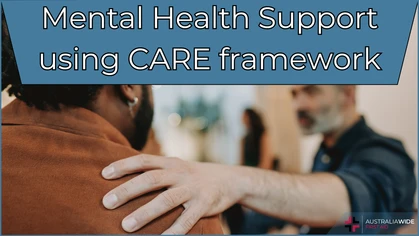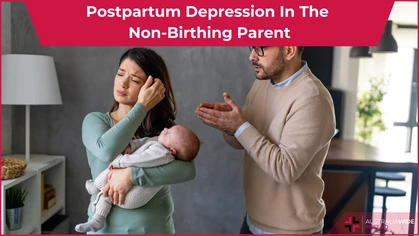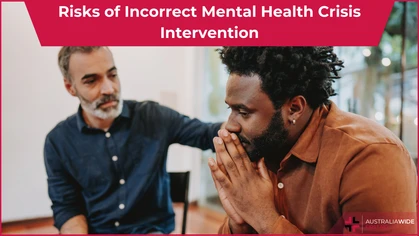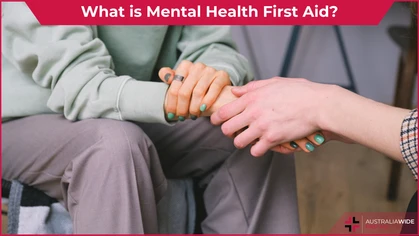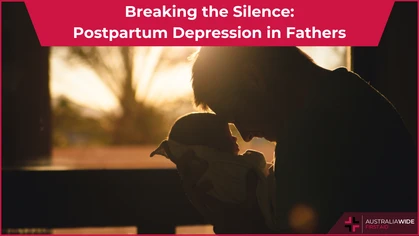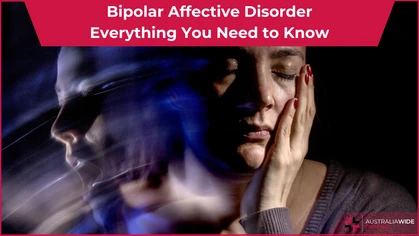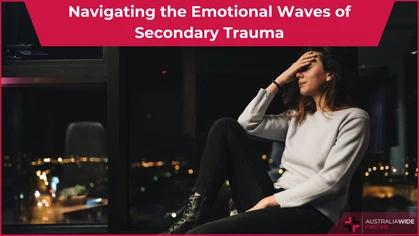When Anxiety Escalates: Understanding Panic Disorders

Mental Health
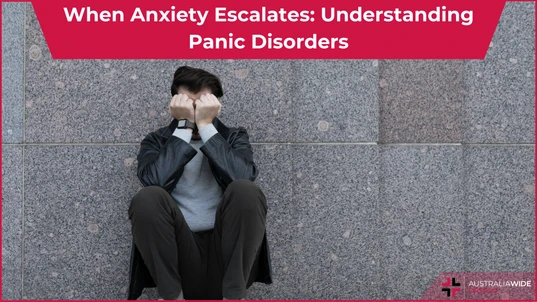 Panic disorder is a common yet often misdiagnosed mental illness that can significantly affect your life.
The hallmarks of panic disorders are abrupt, severe bouts of anxiety and terror. Reflexes, shortness of breath, and rapid heart rate are common physical manifestations of these overwhelming worries.
In this blog article, we will explore the realm of panic disorders, including their causes, symptoms, treatments, and the critical decision of whether to get professional help.
Panic disorder is a common yet often misdiagnosed mental illness that can significantly affect your life.
The hallmarks of panic disorders are abrupt, severe bouts of anxiety and terror. Reflexes, shortness of breath, and rapid heart rate are common physical manifestations of these overwhelming worries.
In this blog article, we will explore the realm of panic disorders, including their causes, symptoms, treatments, and the critical decision of whether to get professional help.
Understanding Panic Disorders
A panic attack is a sort of anxiety episode marked by a sudden and overpowering feeling of great fright. Several stressful circumstances might set off the attack. A panic attack, however, may appear to come out of nowhere. It's crucial to understand that having a panic episode is not always a sign of an anxiety problem. Still, a lot of anxiety disorders have panic episodes as a common feature. Panic attacks can be incredibly distressing. Some people describe them as feeling like they're on the brink of death or losing their sanity. Someone with a history of panic attacks can go to great lengths to avoid situations they believe could trigger an episode of the condition. This avoidance behaviour can lead to the development of other anxiety disorders, especially phobias like agoraphobia. According to figures from the Australian Bureau of Statistics, 3.7% of Australians report having suffered panic attacks in the previous year. Among the Aboriginal and Torres Strait Islander populations, in particular, its frequency seems to be noticeably greater, possibly surpassing the national average by about 3.3 times. Moreover, women are diagnosed with panic disorder at a higher rate than males. Any age can experience the symptoms of panic disorder; however, they usually appear between late adolescence and early adulthood. It's interesting to note that elderly persons appear to have a lower prevalence of panic disorder.Types of Panic Episodes
There are two distinct forms of panic attacks: expected and unexpected panic episodes. Specific cues or triggers precipitate an expected panic episode. It can include a situation where you experience panic attacks while being in a job interview, speaking in public, airplane, or in an elevator. Conversely, unexpected panic episodes manifest with no identifiable cue or trigger. They can strike at any moment, even when you are in a tranquil state or asleep.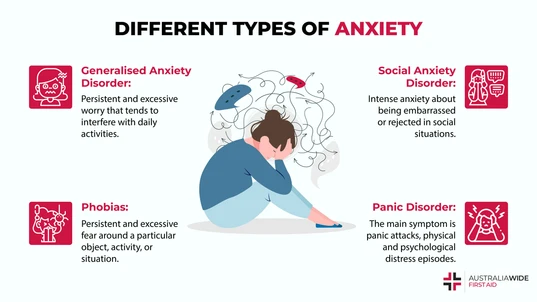
Panic attacks can be, but aren't always, linked to anxiety disorders.
Causes of Panic Disorders
Although the exact cause of panic disorders is still unknown, experts generally agree that it is related to chemical reactions in the brain caused by perceived or actual threats, stressful events, or even just thinking about such stressors. Thus, when the body's "fight-or-flight" response is activated without an immediate threat, it's safe to say it is a panic attack. Even during seemingly relaxed situations like watching television or drifting off to sleep, some people can experience the symptoms of a panic attack. These reactions cause physical changes that are easily noticeable, such as shallow breathing and a racing heartbeat. Several factors can predispose the body to trigger the "fight-or-flight" response when such reaction isn't necessary:- Chronic Stress: Prolonged and ongoing stress can lead to the excessive release of stress hormones, such as adrenaline, by the body.
- Acute Stress: Sudden and intense stress can lead to the rapid release of a large quantity of stress hormones. It is often associated with traumatic events such as sexual violence, experiencing or experiencing acts of terrorism, being a victim of a traumatic accident, for example, a road accident, etc.
- Overconsumption of caffeine: This substance is present in common drinks like coffee and tea.
- Illness: Long-term or degenerative physical and mental conditions can cause physical changes in your body that can make you feel stressed and anxious.
- Sudden environmental change: This includes things like walking into a crowded, stuffy, or hot place.
- Habitual Hyperventilation: This can result in a drop in the levels of carbon dioxide in the blood. This drop can disrupt your body's natural gas balance.
Recognizing Signs and Symptoms of Panic Attacks
Panic disorders can be challenging to identify, as their symptoms vary from person to person. Understanding the common signs and symptoms is crucial for early recognition and intervention. You can categorize these symptoms into three main dimensions: physical, emotional, and behavioural. Physical Symptoms Panic disorders often manifest with a range of distressing physical sensations, including but not limited to:- Rapid Heartbeat
- Shortness of Breath
- Hyperventilation
- Trembling or Shaking
- Sweating
- Chest Pain or Discomfort
- Dizziness or Light-headedness
- Nausea or Stomach Upset
- Chills or Hot Flashes
- Intense Fear
- A fear that you're losing control or going crazy.
- A feeling that you or your surroundings are not real.
- The fear that you might die during an attack.
- Avoiding situations or places where you've experienced panic attacks in the past
- Safety Behaviours: Some people develop rituals or behaviours to feel safer during an attack.
- Seeking constant reassurance from others.
- Withdrawal from social activities or responsibilities.
Treatment Options
A panic disorder is a highly treatable condition. There are several approaches available to help manage and overcome it. These treatments often include: Behavioural Therapy: Therapeutic approaches, such as cognitive-behavioural therapy (CBT) and exposure therapy, are among the most commonly used methods for addressing anxiety and panic disorders. CBT helps you identify and change thought patterns that contribute to panic attacks. Exposure therapy, on the other hand, gradually exposes you to your fears to reduce anxiety. Medication: Healthcare professionals can prescribe anti-anxiety medications, such as antidepressants and anti-anxiety drugs to help ease the symptoms of panic disorders. The primary medication-assisted approach to treating panic disorder revolves around the utilization of selective serotonin reuptake inhibitors (SSRIs). Other options include:- Tricyclic antidepressants (TCAs)
- Benzodiazepines (BZDs)
- Monoamine oxidase inhibitors (MAOIs)
- Fluvoxamine
- Fluoxetine
- Paroxetine
- Citalopram
- Sertraline

Practicing self-help techniques when you are not in a state of panic can help you to bring these skills forward during crisis.
Self-Help Strategies
You can also manage panic attacks and panic disorders with self-help strategies, which will empower you to take control of your condition. Here are some practical tips for you to consider:- Relaxation Techniques: Practice deep breathing, meditation, or progressive muscle relaxation to reduce anxiety and physical tension during an anxiety attack.
- Mindfulness Practices: Mindfulness and meditation can help you become more aware of stressful thoughts and feelings you may be grappling with, reducing your reactivity to panic triggers.
- Lifestyle Changes: Adopt a healthy lifestyle with regular exercise, a balanced nutritional diet, and adequate sleep to improve overall well-being and reduce vulnerability to panic attacks.
- Self-Care and Stress Management: Prioritize self-care practices, such as hobbies, social connections, and stress-reduction activities, to build resilience against panic attacks.
When to Seek Professional Help
Recognizing the need for professional intervention is crucial, regardless of the level of severity of panic disorder you may be experiencing. It would be best to consider professional help when your panic disorder:- Undermines your relationships
- Hampers your professional relationships and growth
- Compromises your ability to focus and concentrate
- Hinders your participation in enjoyable activities
- Induces persistent sleep disturbances
- Provokes isolation from friends and other loved ones
- Induces feelings of self-loathing or worthlessness
- Triggers thoughts of self-harm or suicide
Conclusion
Lastly, understanding the reality of panic disorders, identifying their symptoms, and researching the many treatment choices signals the start of your path to overcome this condition. Remember that you are never traveling alone. Please reach out for help from your social circle and mental health professionals whenever possible. Have faith that you possess the fortitude to reclaim your life. Complete recovery is not only possible—it's a glimmer of an endless future full of peace and hope.
Originally published at
https://www.australiawidefirstaid.com.au/resources/understanding-panic-disorders
as part of the Australia Wide First Aid Articles Library

